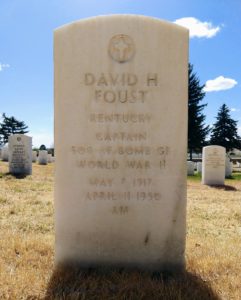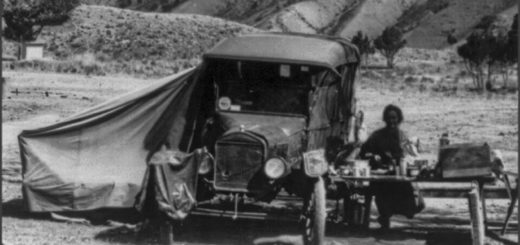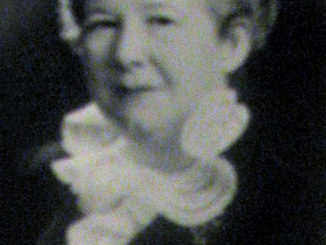Cemetery Tale: A near nuclear disaster over Albuquerque
A B-29 with a crew of 13 crashed into the Manzano Mountains about 3 minutes after taking off from Kirtland Air Force base, at 9:41pm on 11 April, 1950. The plane and crew had landed to refuel during a routine navigational training flight. For reasons that were never explained, the plane continued straight, climbing a little more than 1,000 feet above the field, after an eastward departure. Procedures at the time required all eastward departing craft to execute a 90-degree turn to the right to avoid the mountain peak. The plane struck the Manzanos about 500 feet from the top, setting fires that continued another 200 feet up the slope. The entire crew perished, including that of Captain David Howard Foust. (This was 5 years before the other, more popularly known TWA crash into the Sandia Mountains whose wreckage can still be seen from somewhat difficult hiking trails to this day.)
This particular plane was assigned to the 509th Bomb Wing, based out of Walker Air Force base in Roswell, NM. The B-29 was the first delivery vehicle for the nation’s nuclear arsenal beginning with the Enola Gay of WWII fame that dropped the “Little Boy” uranium-based atomic bomb over Hiroshima in 1945. The B-29 that crashed over Albuquerque on a secret section of the “Sandia Base” was, in fact, carrying a nuclear weapon. It was discovered post-crash and published much later that “detonators were installed on the bomb” though it was unarmed during the flight. Furthermore, the bomb casing was destroyed, some of the high-energy explosive (HE) detonation material was burned in the subsequent engine fuel fire. Other sections of HE were discovered intact. The radioactive uranium sections were also intact and no radiation contamination occurred. It was the first such nuclear weapons accident in the US.

Capt. David H. Foust and Lt. Brown, among the crew of 13 who perished in the B-29 crash on 11 April, 1950 in Albuquerque, NM
[Detroit Free Press, 13 April 1950, p. 11]
The full crew list is given below.
- Capt. John R. Martin, pilot-in-command
West Frankfort, Illinois - Capt. David H. Foust
Detroit, Michigan - 1st Lt. Richard A. Cates
Cleona, Pennsylvania - 1st Lt. Ralph E. Farmer
Centralia, Illinois - 1st Lt. Lewis Ranck
Altoona, Pennsylvania - 1st Lt. Thomas J. Stultz
Russel, Kentucky - S. Sgt. Richard E. Cooper
Denver, Colorado - S. Sgt. Eugene R. Thompson
Kansas City, Kansas - S. Sgt. Walter C Boedeker
Danville, Illinois - S. Sgt. James B. Karney
New Franklin, Mississippi - S. Sgt. Gerald M. Powell
LeRayville, Pennsylvania - Sgt. J. R. Chilton, Jr.
Hermon, New York - Sgt. Virgil R. Tennyson
Whon, Texas



Recent Comments